What is a Sailing Ditch Bag & What Goes in One?
- Authors
-
-

- Name
- Patrick Maflin
-
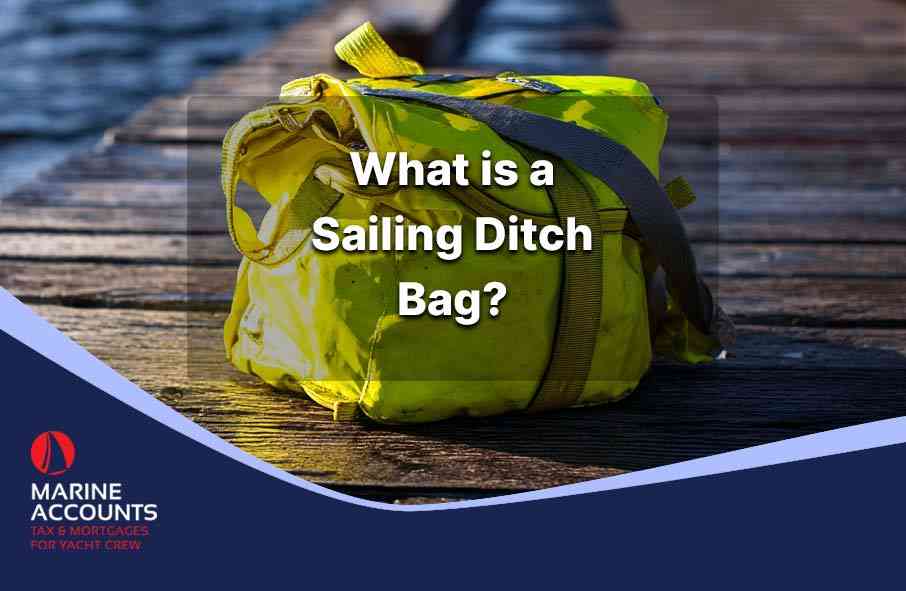
A ditch bag is an emergency grab bag used by sailors and boaters that contains essential survival gear needed if they must abandon ship.
But what goes into a ditch bag and who needs one?
Let’s find out below.
Chapters
- What is a Ditch Bag?
- Why Do Sailors Carry a Ditch Bag?
- Do Yacht Crew Need a Ditch Bag?
- What Goes into a Ditch Bag?
- Ditch Bag Packing Tips
- Regular Ditch Bag Checks
- Key Takeaways
What is a Ditch Bag?
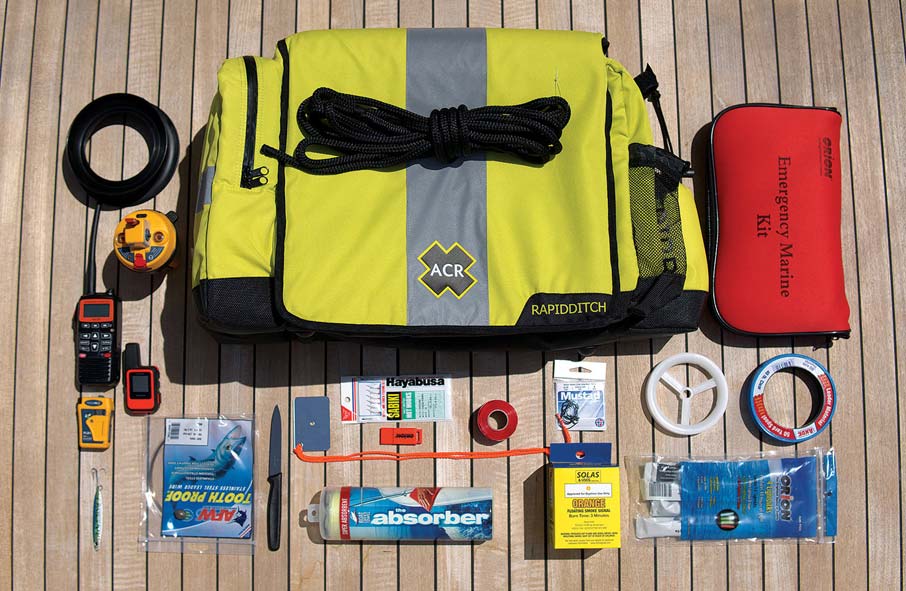 Image credit: Marlin
Image credit: Marlin
A ditch bag, sometimes referred to as an abandon ship bag or grab bag, is a waterproof and floatable container that holds carefully selected survival gear.
Its primary purpose is to keep vital tools and supplies within easy reach in the event of an emergency at sea.
If the vessel is sinking or becomes unsafe, the ditch bag is taken to a life raft or lifeboat.
This ensures the crew has immediate access to life saving items while awaiting rescue.
Unlike general storage or safety lockers, a ditch bag is designed to be grabbed in seconds when emergency strikes.
It’s packed specifically with worst-case scenarios in mind.
Everything inside is chosen for durability, usefulness, and the ability to function in harsh maritime conditions.
Why Do Sailors Carry a Ditch Bag?
At sea, things can go wrong quickly and often without warning.
Fire, flooding, collisions, or severe weather can force yacht crew to abandoned ship in a matter of minutes or even seconds.
In such situations, a ditch bag is a lifeline.
The contents of the bag can mean the difference between life and death, avoiding being stranded.
They help you stay warm, fed, and able to communicate with rescuers.
Modern rescue systems can take time to locate sailors in distress, especially in remote waters.
So having the right gear on hand greatly increases the chances of survival and improves morale while waiting to be found.
A well prepared ditch bag isn’t just about safety, it’s about peace of mind.
It ensures that even in the worst situations, you have the essentials at hand to help you survive.
Do Yacht Crew Need a Ditch Bag?
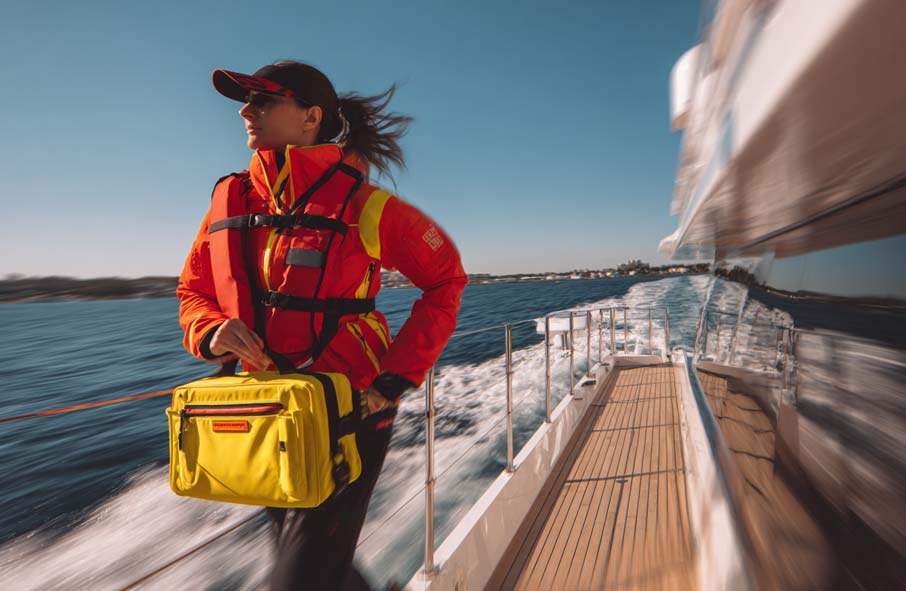
Ditch bags are just as important for professional crew working on a yacht as they are for solo sailors or small recreational boats.
While superyachts are usually well equipped with life saving equipment, individual crew members may be asked to organise their own personal ditch bag as part of the vessel’s basic safety rules.
Some yachts have a centrally located ditch bag near escape routes or life rafts, while others may designate ditch bags for the bridge, engine room or guest areas.
In some cases, crew members choose to prepare their own ditch bags that contain basic survival items, documents, and identification, in case they‘re separated during an emergency.
Even the most luxurious and technologically advanced vessels can experience unexpected issues, so preparedness is critical.
What Goes into a Ditch Bag?
The contents of a ditch bag should be selected based on the type of sailing activity, the distance from shore, climate and weather conditions, and total people onboard.
Items generally fall into categories designed to support survival, rescue, health, and comfort.
Signalling Devices
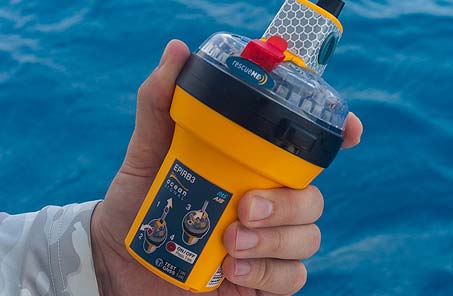 Image credit: Ocean Signal
Image credit: Ocean Signal
Signalling equipment is critical for helping rescuers locate you. These items should be waterproof and easy to use in pressure situations. They include:
- Flares (handheld and aerial)
- LED strobe lights
- Signal mirror
- Whistle
- Dye marker
- Emergency position-indicating radio beacon (EPIRB)
- Personal locator beacons (PLBs)
Survival Gear
 Image credit: Amazon
Image credit: Amazon
Once safely in a life raft or awaiting rescue, survival gear helps you endure the elements. They include:
- Space blankets or thermal blankets
- Multi-tool or marine knife
- Waterproof torch and spare batteries
- Glow sticks
- Paracord or line
- Bailer or sponge
- Heavy-duty gloves
First Aid Supplies
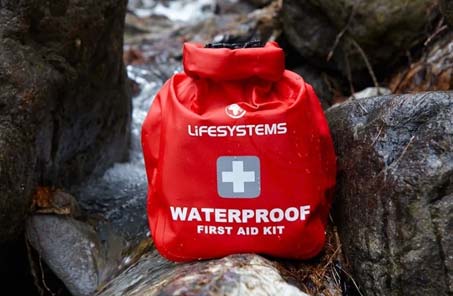 Image credit: Absolute Snow
Image credit: Absolute Snow
Injuries are common during maritime emergencies, and quick treatment can prevent complications. They include:
- Waterproof first aid kit
- Bandages and gauze
- Antiseptic wipes
- Seasickness tablets
- Pain relievers
- Tweezers and scissors
Sustenance
 Image credit: EVAQ8
Image credit: EVAQ8
It’s important to include enough food and water to survive at least 24 to 72 hours. This includes:
- Sealed water pouches or purification tablets
- High-calorie food bars
- Electrolyte sachets
- Collapsible water bottle or container
Communication Tools
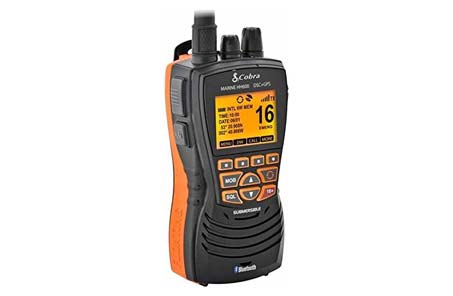 Image credit: Amazon
Image credit: Amazon
Staying in contact with rescuers or nearby vessels is crucial. This includes:
- Waterproof handheld VHF radio
- Pre-paid emergency mobile phone in a dry bag
- Notepad and waterproof pencil
- Pre-written distress message cards
Shelter and Protection
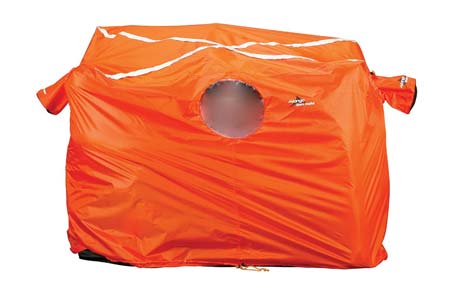 Image credit: Go Outdoors
Image credit: Go Outdoors
Exposure is one of the biggest threats at sea, especially in cold or wet environments. This includes:
- Lightweight survival tent or canopy
- Ponchos or rain covers
- Sunblock and lip balm
- Wide-brimmed hat or cap
- Mosquito repellent (for tropical regions)
Navigation Equipment
 Image credit: Amazon
Image credit: Amazon
Even in an emergency, knowing your position and heading can help with rescue or self-rescue. This includes:
- Handheld GPS device
- Compass
- Laminated charts of local waters
Other
Whilst not critical, there’s a few miscellaneous items that can improve comfort and efficiency during a life and death situation. This includes:
- Spare glasses or contact lenses
- Copies of passports and IDs in a sealed pouch
- Cash in small denominations
- Personal medications
- Duct tape
- Spare lanyards or carabiners
Ditch Bag Packing Tips
When assembling ditch bags, prioritise quality over quantity.
Every item should have a clear purpose and be functional in wet, windy, and low light conditions.
Use waterproof pouches inside the main bag to organise items by category.
This reduces time spent rummaging around in an emergency.
Choose a brightly coloured high visibility bag with buoyancy, plus carry handles or shoulder straps so you can locate and carry it easily.
Label everything clearly and pack items to minimise movement.
This prevents damage and keeps gear silent when the bag moves.
Especially important in stressful situations when every second counts.
Regular Ditch Bag Checks
Packing a ditch bag is not a job you do once and forget about it.
Equipment can degrade, batteries die, and items pass their expiration date.
To stay ready, schedule regular inspections at least twice a year, especially before you set sail.
Replace expired items like food, water, and medicine.
Test electronics, recharge batteries, and update emergency contact numbers or navigation charts.
It’s also wise to keep an updated checklist inside the bag to make repacking easier after a drill or inspection.
Yacht crew should always be familiar with the bag’s location and contents.
Safety drills should include practice using or retrieving it under real world conditions.
Key Takeaways
Sailing ditch bags are a vital piece of safety equipment, packed with essential tools to help yacht crew survive and stay connected in an emergency at sea.
Whether you are a recreational boater or part of a professional yacht crew, having a well-prepared and regularly checked ditch bag could make all the difference if disaster strikes.
It’s a small investment of time and resources for what could be a life-saving return.
Disclaimer: Any advice in this publication is not intended or written by Marine Accounts to be used by a client or entity for the purpose of (i) avoiding penalties that may be imposed on any taxpayer or (ii) promoting, marketing or recommending to another party matters herein.






